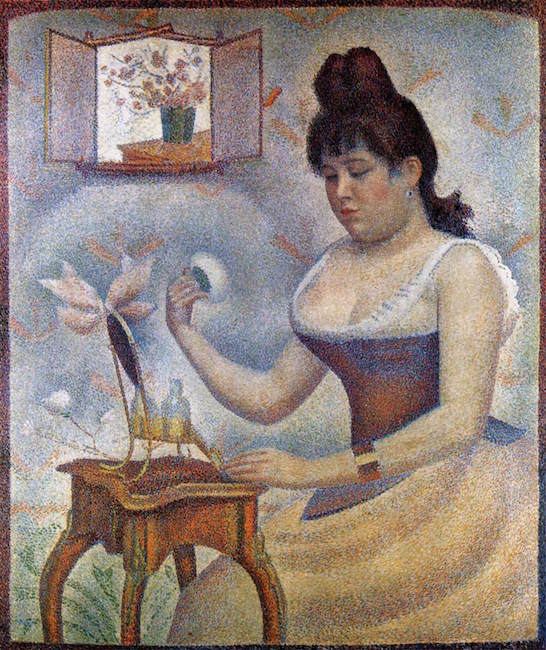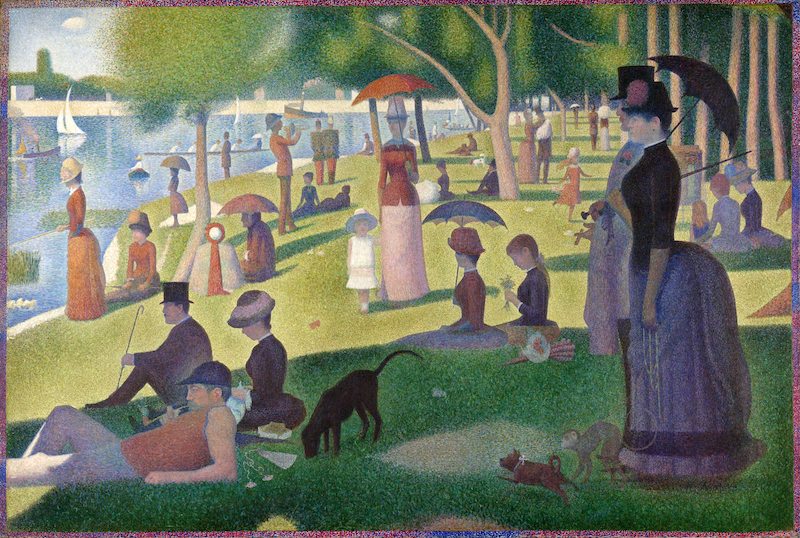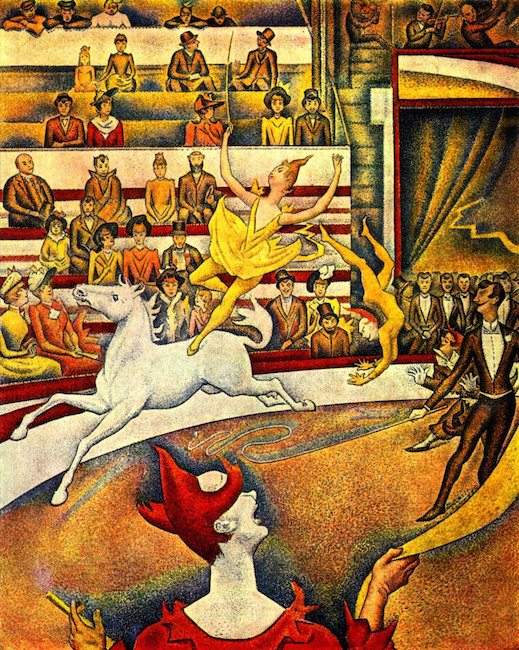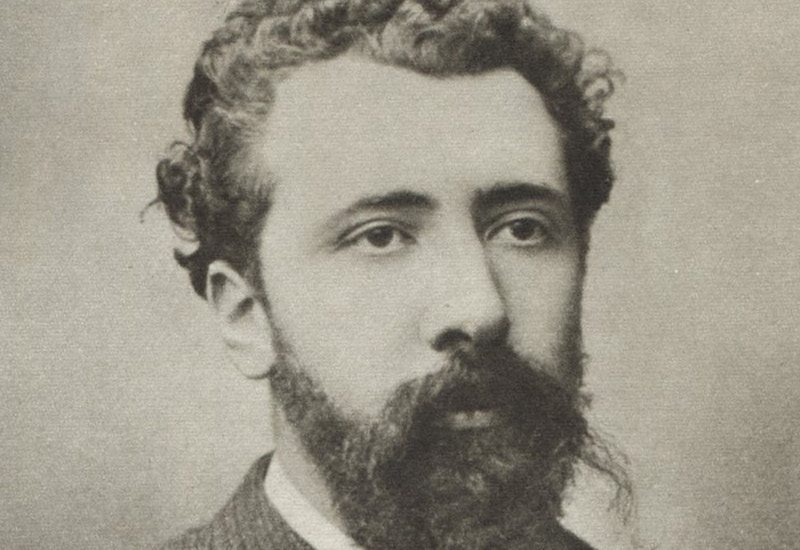Georges Seurat
Episode #2 of the course “Prominent artists of Modern Art”
Georges Seurat, one of the most important post-impressionist (or “neo-impressionist”) artists, was born in 1859 in Paris. He developed a style that came to be known as “pointillism,” where an entire image is made of points or small spots of paint. The technique was both a new method of painting as well an incorporation of new symbolism into artistic meaning.
 Young Woman Powdering Herself
Young Woman Powdering Herself
Seurat began studying painting first at the Ecole Municipale de Sculpture et Dessin and then at the École des Beaux-Arts in Paris. As with many art students of the time, Seurat learned to paint by studying artwork at the Louvre. He exhibited drawings, sketches, and paintings throughout the 1870s as a student before joining military service in 1879.
In 1883, Seurat caused a stir when he exhibited his first crayon drawing in a Parisian salon. His 1884 painting Bathers at Asnieres is considered an important piece that shows his development. However, it was his 1886 painting A Sunday on the Island of Grande Jatte that amazed onlookers with its layers of small brushstrokes that created a tapestry-like texture. It took him two years to complete and is 10 feet wide. While many museums around the world house studies and sketches that prepared Seurat for Grande Jatte, the final painting is on exhibit at the Art Institute of Chicago.
 Bathers at Asnieres
Bathers at Asnieres
 A Sunday on the Island of Grande Jatte
A Sunday on the Island of Grande Jatte
Seurat painted modern urban life and was interested in how putting together dots and layers of paint created large images. He wanted to symbolize individuals and collectivity in modern scenes like cities. Seurat combined his classical training and understanding of artistic techniques with his interest in contemporary color and optical theory. Believing that colors could elicit emotional effects, he pushed color theory and experimented with a technique he called “chromo-luminism,” which was later known as Divisionism.
For years, he continued to paint oil canvases and oil panels, as well as sketched in his Paris studio. In 1891, Georges Seurat died of an unknown disease at home, leaving his final work The Circus unfinished.
 The Circus
The Circus
Share with friends

